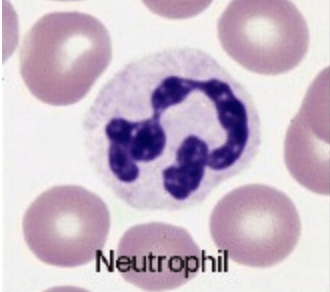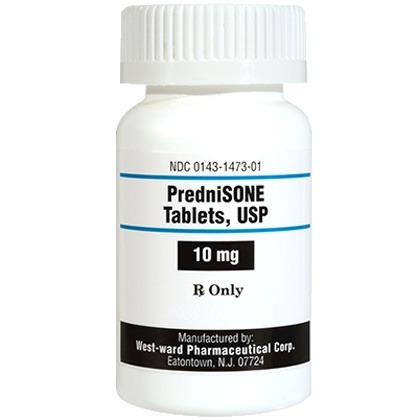It should come as no surprise to anybody who follows this blog that I love hematology and immunology! In previous posts I’ve written about various immune-mediated problems, including immune-mediated hemolytic anemia, immune-mediated thrombocytopenia, and immune-mediated polyarthropathy. This week I’m sharing information about another immune-mediated condition: immune-mediated neutropenia or IMN. I hope you find the material informative and will share it with other pet owners. Happy reading!

What is IMN?
To understand immune-mediated neutropenia, you need to know what neutrophils are. The bone marrow produces red blood cells, platelets, and white blood cells. There are several types of white blood cells, of which neutrophils are one of them. Neutropenia is the medical term for a low neutrophil count and occurs for one of three main reasons:
- Reduced production by the bone marrow
- Increased utilization by other tissues
- Immune-mediated destruction

In the latter disease, the immune system decides to destroy neutrophils. Think of it this way. The immune system has decided to throw a temper tantrum, and it’s taking it out on neutrophils. Specifically, the immune system produces special proteins called antibodies that target specific components of the neutrophil cell membrane. When cells are tagged with antibodies, organs of the immune system (e.g.: the spleen) remove them from circulation.
When we can identify the cause that triggers the immune system to attack neutrophils, we use the term secondary IMN. Common potential causes include:
- Infections (bacterial, viral, parasitic)
- Reactions to certain drugs
- Cancers
- Vaccine reactions
Sometimes we can’t identify the underlying cause for why the immune system attacks neutrophils. In such instances, we use the term primary or idiopathic IMN.
What does it look like?
To date there is no breed, sex, or age predisposition for IMN in cats or dogs. Clinical signs are quite varied. Some pets are clinically normal while others have meaningful signs, including:
- Fever
- Weight loss
- Reduced (or loss of) appetite
- Increased respiratory rate
- Epistaxis (nose bleed)
- Lameness
A veterinarian should perform a thorough physical examination. Potential abnormalities include joint pain, pale gums, abnormal breathing, enlarged lymph nodes, and splenomegaly (enlarged spleen).

How is IMN diagnosed?
Several non-invasive tests are essential for accurately diagnosing patients with ITP, including:
- Measure red blood cells, white blood cells and platelets – complete blood count, peripheral blood film evaluation
- Evaluate major organ function, like the liver and kidneys – biochemical profile & urinalysis
- Assess the immune system – anti-neutrophil antibody testing, antinuclear antibody test (ANA)
- Look for certain infectious diseases, such as those transmitted by ticks – polymerase chain reaction (PCR) or antibody/serology tests
- Determine if the bone marrow is functioning properly – bone marrow cytology & biopsy
- Screen for cancer – chest radiographs (x-rays), abdominal radiographs, abdominal ultrasound, bone marrow cytology & biopsy
How is it treated?
Modifying how the immune system responds is essential to effectively beating this disease. The initial intervention most commonly used to modulate the immune system is treatment with a corticosteroid, typically prednisone/prednisolone. Side effects are common but temporary, and may include:
- Increased thirst
- Increased appetite
- Increased frequency of urination
- Panting
- Muscle weakness
- Weight gain

Some patients with IMN can be successfully managed with prednisone alone. Many, however, benefit from the use of more than one immunomodulatory drug. No study has yet identified the perfect immunomodulatory protocol, that is, one that works for every patient. To help develop the best possible treatment plan for your pet, consulting with a board-certified internal medicine specialist can be invaluable. Some drugs that may be recommended include:
- Cyclosporine
- Azathioprine
- Mycophenolate mofetil
- Leflunomide
- Intravenous immunoglobulin G (IVIg)
- Recombinant human granulocyte colony-stimulating factor (G-CSF)
Patients who fail to respond to traditional immunomodulatory therapy may benefit from a specialized blood-cleansing procedure called therapeutic plasma exchange (aka: TPE or plasmapheresis) that can be performed at certain specialty hospitals.
Patients with neutropenia of any etiology are susceptible to opportunistic infections and sepsis. As such, treatment with broad-spectrum antibiotics may be prescribed.
The take-away message about IMN…
Immune-mediated neutropenia or IMN is a complicated disease triggered by an inappropriate reaction by the immune system. With aggressive medical management patients can respond to prescribed therapies and ultimately lead happy, healthy lives. Board-certified internal medicine and critical care specialists have extensive experience diagnosing and managing patients with IMN, and their involvement as a member of your pet’s healthcare team can be invaluable.
To find a board-certified veterinary internal medicine specialist, please visit the American College of Veterinary Internal Medicine.
Wishing you wet-nosed kisses,
CriticalCareDVM

